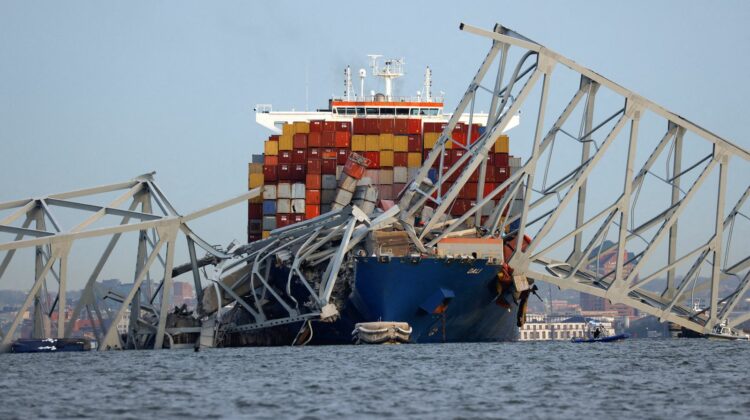
S&P Global Analysis: Baltimore bridge collapse disrupts local traffic, global shipping
NEW YORK : On March 26, the Francis Scott Key Bridge in Baltimore collapsed after being struck by containership MV Dali operated by AP Moeller Maersk A/S on an international route between the US east coast and Asia. The collapse blocks the main access to the port of Baltimore and traps six bulk carriers and two navy vessels.
According to Mr. Chris Rogers, Head of Supply Chain Research, S&P Global Market Intelligence:
“The bridge collapse is the latest challenge for northeast US supply chains, including access to the Red Sea and Panama Canal as well as the prospect of port strikes later in mid-2024. Both bridge reconstruction and cargo delays are likely to be extensive. However, some freight across containerized and bulk modes could reroute to nearby ports in Wilmington, Delaware and Philadelphia, Pennsylvania.
“The port handled around 3% of all US east and gulf coast imports and 10% of US northeast imports of containerized freight in the 12 months to Jan. 31, 2024. It is particularly important for the wood (39% of northeast ports’ imports), construction machinery (31%) and steel/aluminum (20%) sectors. Consumer goods exposures including home appliances (16%) and furniture (9%).
“The port is also one of the largest handlers of specialty wheeled transport shipments (cars and trucks) in the US, though one of the major terminals is located oceanside from the bridge and so may face less disruption.”
Disruptions to 10% of northeast imports: Supply chain impact
The Port of Baltimore handled 650,897 TEUs of inbound traffic and 272,8590 TEUs of outbound shipments in the 12 months to Jan. 31, 2024, accounting for 2.8% and 3.1% of the US east and Gulf Coast total, respectively, according to S&P Global Market Intelligence data.
Container freight accounted for 75% of volumes handled through the port in the past 12 months, with autos and roll-on, roll-off capacity representing another 18%, while bulk shipments of steel and forestry products accounted for much of the remainder.
The port is also one of the largest handlers of specialty wheeled transport shipments (cars and trucks) in the US, though one of the major terminals is located oceanside from the bridge and so may face less disruption.

